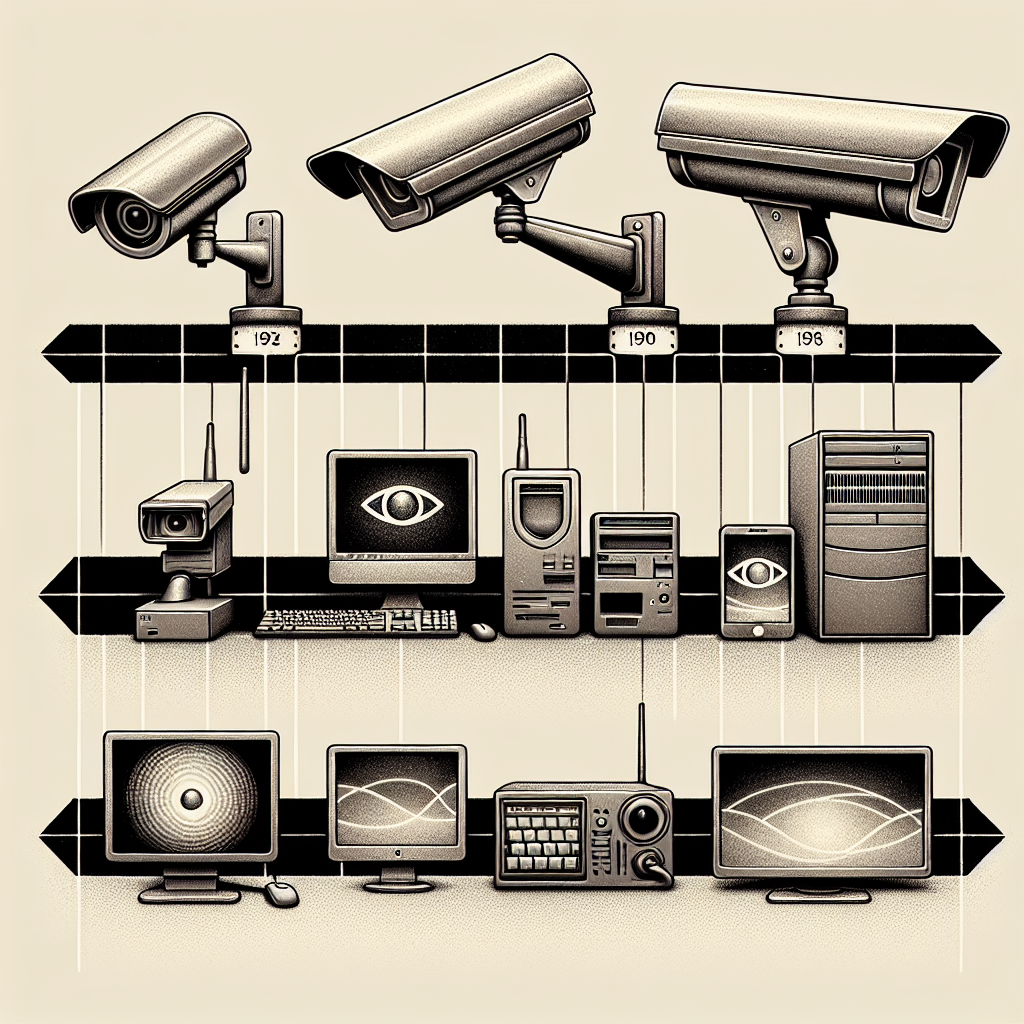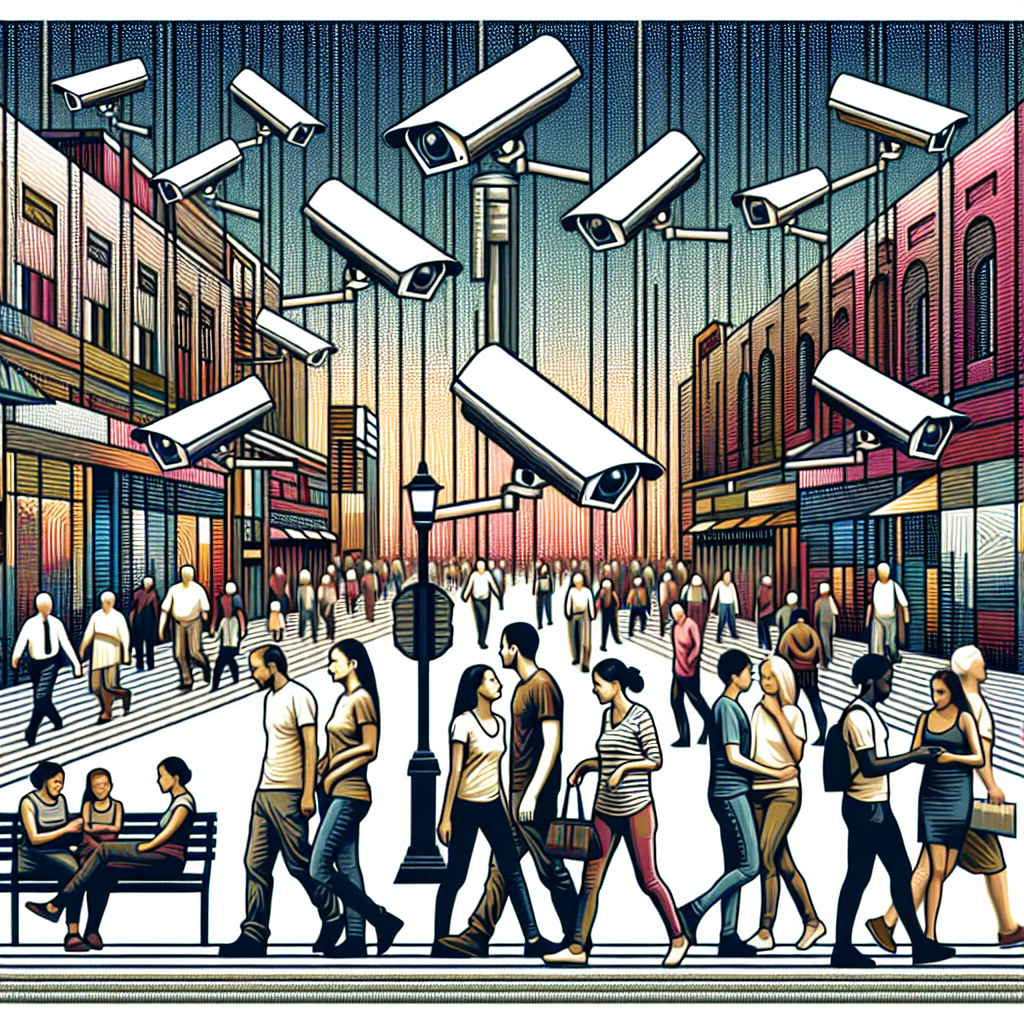From CCTV to Smartphones: The Evolution of Government Surveillance
The landscape of government surveillance has undergone a monumental transformation over the past few decades. Various advancements in technology have rendered traditional surveillance methods obsolete, giving way to state-of-the-art innovations. This article explores the evolution of government surveillance, focusing on key technologies including CCTV, smartphones, and beyond.
The Rise of CCTV
Closed-Circuit Television (CCTV) emerged in the 1960s as a hallmark of government surveillance. Originally utilized for monitoring high-risk areas like banks and military installations, the technology quickly infiltrated public spaces. By the 1990s, major cities worldwide began installing extensive networks of CCTV cameras, leading to fears and criticisms about privacy intrusions.
CCTV’s primary function is to deter crime and ensure public safety. A notable example of effective CCTV implementation is London, where thousands of cameras are strategically placed throughout the city. Studies suggest that the presence of CCTV can reduce crime rates by about 20%, thus justifying its pervasive use. However, ethical concerns emerged as citizens questioned the balance between public safety and individual freedoms.
The Transition to Digital Surveillance
The shift from analog to digital technology marked a significant milestone in surveillance evolution. Digital CCTV systems not only improved image quality but also enabled remote monitoring and recording capabilities. This shift facilitated the introduction of features such as motion detection, facial recognition, and automated alerts. With advancements in artificial intelligence (AI), modern surveillance systems can analyze large datasets in real-time, providing law enforcement agencies with valuable insights.
The integration of digital CCTV with municipal databases, such as criminal records and vehicle registrations, enhances surveillance effectiveness. However, these advancements also sparked debates surrounding data privacy and the risks of mass surveillance. Governments are now challenged to formulate policies that balance security measures with civil liberties.
Smartphones: The New Frontier of Surveillance
The advent of smartphones has revolutionized the dynamics of government surveillance. With billions of smartphones in use globally, these devices serve as powerful tools for both citizens and government agencies. Smartphones collect vast amounts of personal data, including location information, contacts, and even biometric data.
Governments leverage this data for various purposes, including crime prevention and national security. For instance, law enforcement agencies can track suspects through location data obtained from smartphones. In instances of serious crimes, authorities may obtain warrants to access call logs, messages, and photos. This processing of smartphone data has led to concerns about privacy rights, with critics arguing it could lead to unauthorized surveillance practices.
The Impact of Social Media
Social media platforms have also emerged as critical components of government surveillance. Users continuously generate vast quantities of data by sharing personal information, interests, and activities. Governments and law enforcement agencies analyze social media posts to monitor trends, public sentiment, and even potential criminal activity.
The Arab Spring of 2011 showcased how social media can be harnessed for both activism and surveillance. Governments in various countries monitored social media to identify activists and quell dissent. Consequently, many citizens have begun to self-censor their online presence for fear of surveillance, raising significant concerns about freedom of expression.
AI-Powered Surveillance Technologies
As artificial intelligence and machine learning technology continue to evolve, so too do their applications in surveillance. AI can process and analyze data at unprecedented speeds, enabling the identification of patterns that would be nearly impossible for humans to detect. Facial recognition systems, for instance, have become increasingly common in surveillance, allowing for quick identification of individuals in crowded public areas.
Although these technologies can assist law enforcement in solving crimes, they also raise ethical concerns. There is a growing body of evidence suggesting that facial recognition algorithms can exhibit biases against certain ethnic groups, leading to misidentifications and wrongful accusations. These ethical dilemmas have prompted calls for stricter regulations and more transparent use of AI technologies in government surveillance.
Legal Frameworks: Navigating Privacy and Surveillance
Governments worldwide grapple with the legal complexities surrounding surveillance technologies. Laws such as the USA PATRIOT Act and the European Union’s General Data Protection Regulation (GDPR) attempt to establish limits on the use of surveillance while ensuring national security and public safety.
In the United States, the Fourth Amendment protects against unreasonable searches and seizures, but the rapid advancement of surveillance technologies often outpaces existing legal frameworks. Courts are increasingly tasked with interpreting these laws in the context of new technologies, often leading to inconsistent decisions regarding the legality of surveillance practices.
In Europe, the GDPR aims to establish robust data protection and privacy standards. It requires organizations, including government agencies, to justify their data collection and ensure transparency in how personal data is used. Compliance with these regulations is critical, as violations can result in hefty fines.
Public Opinion and Accountability
Public opinion plays a vital role in shaping government surveillance policies. Surveys indicate a growing concern among citizens regarding privacy and the potential misuse of surveillance technologies. Activism surrounding data protection, transparency, and human rights has gained momentum as more individuals seek accountability from their governments.
Organizations such as the Electronic Frontier Foundation (EFF) and the American Civil Liberties Union (ACLU) advocate for strict regulations on government surveillance practices. They emphasize the need for oversight mechanisms to ensure that surveillance technologies are employed within reasonable boundaries.
Conclusion Paragraph
As technology continues to evolve, the methods and implications of government surveillance will undoubtedly adapt. The increasing interconnectedness of digital systems raises new challenges and opportunities for both safeguarding public safety and protecting citizens’ rights. Engaging in discussions about ethics, accountability, and oversight is crucial for navigating the fine line between surveillance for security and the preservation of individual freedoms. As society embraces these technological advancements, ongoing dialogue will be essential to ensuring a balanced approach to government surveillance in the 21st century.












Leave a Reply